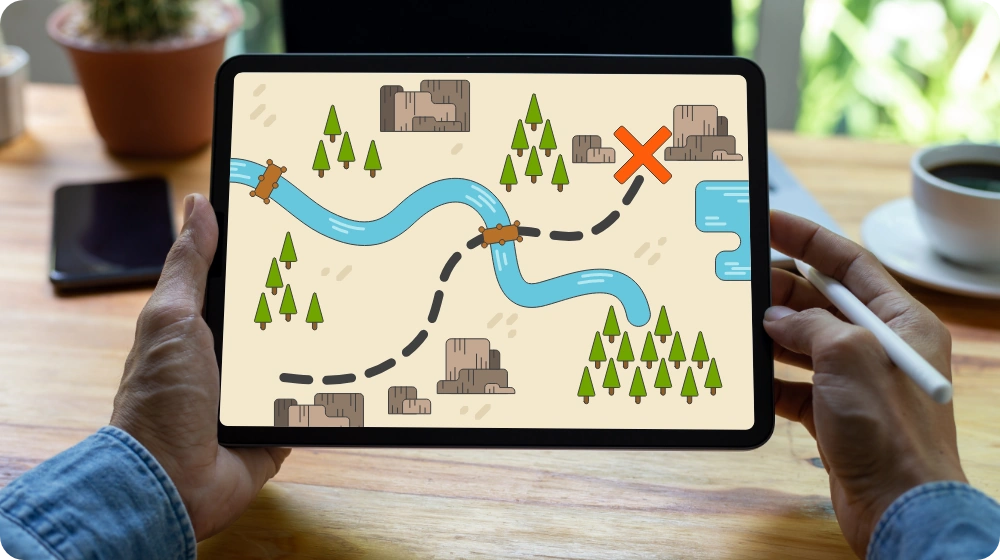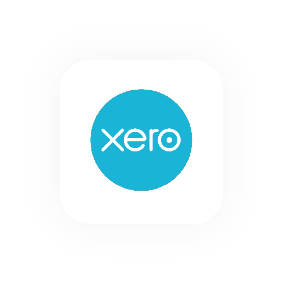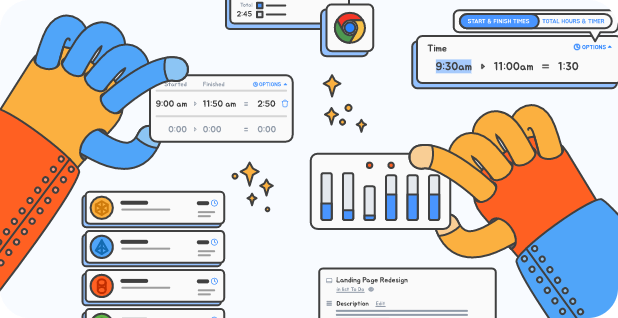Rapid Planning Method
How To Use Tony Robbin's Rapid Planning Method (RPM) To Your Advantage
In today’s fast paced world, finding a reliable way to organize tasks, maintain focus, and achieve meaningful outcomes can be a game-changer. Tony Robbins’ rapid planning method is a powerful approach designed to elevate your time management practices beyond a simple to-do list. This article will provide a detailed exploration of the rapid planning method so you can get the most from your personal and professional life, ensuring a balance that fosters growth in both areas. We will delve into what the RPM system entails, why it surpasses conventional approaches, and how to apply it.

Understanding the Foundations of Time Management
Before we focus on Tony Robbins’ rapid planning method, let’s address a critical skill set that underpins it: time management. In any field—business, art, science, or education—the effective use of time is crucial. We have an ever-expanding set of responsibilities and an abundance of distractions, each competing for our attention. Traditional approaches to time management often rely on a structured to-do list: you write down everything you need to get done and then check items off one by one. While there is merit in this, it can overlook the bigger picture. A typical to-do list lacks the motivational link to your core goals and can dissolve into a series of mechanical tasks.
Tony Robbins noticed this gap and introduced a time management technique that focuses first on the big picture—what you really want—and then on the specific actions that must follow. The rapid planning method (also called the rpm method) transforms the way people identify objectives and commit to action. If you’ve ever felt overwhelmed or struggled to integrate your time management skills into a coherent strategy, this system can help you break free from stagnation.
Why we need a better time management system
Effective time management is more than a collection of worksheets or digital tools; it is a philosophy of productivity that prioritizes clarity of purpose. In today’s world, you don’t just need to manage tasks; you need to manage your mind, maintain energy, and ensure that your daily efforts move you toward a desired outcome. By adopting a results-oriented mindset, you can replace random busyness with effective engagement.
Moreover, tools such as calendars, planners, or a time tracking app become more impactful when you have a clear framework. With Tony Robbins’ rapid planning method, you align your tasks with your deeper motivations, ensuring your actions are propelled by purpose. This fosters an authentic drive that keeps you consistently engaged—no more empty checklists or tasks that feel devoid of meaning.
Introducing the Rapid Planning Method
Tony Robbins coined the term rapid planning method to encapsulate a philosophy that goes far beyond a mundane schedule or chore list. While at first glance it may appear similar to other personal development methods, the RPM differentiates itself by fundamentally changing how you define your goals and map out your journey. Instead of merely prioritizing tasks, you focus on creating a compelling desired outcome—one that sparks your passion, instills clarity, and drives a commitment to execution.
At its core, the RPM method relies on three central questions:
- What do I really want? (The desired result or desired outcome)
- Why do I want it? (Your reason, your purpose)
- How can I achieve it? (Your massive action plan)
The emphasis here is on your emotional engagement. If your objective is flat and unconvincing, your motivation will similarly be lackluster. The massive action plan emerges naturally once you identify precisely what you want and why you want it. This synergy sets the RPM system apart from traditional linear scheduling.
The RPM system shifts
A key phrase Tony Robbins often references is the ‘RPM system shifts’ - the mental shift from a mundane approach to one that prioritizes outcomes and fulfillment. Instead of methodically listing out every small step, you begin with the end in mind. You see your desired outcome vividly, connect that outcome to a compelling reason, and then craft the steps that will get you there. This shift turns your time management practice into a more fluid, engaging, and results-oriented pursuit
From Personal to Professional: Why RPM Works Everywhere
A hallmark of the rapid planning method is its flexibility. It works equally well in your personal and professional life because it is built around clarity of purpose, which is universally applicable. Whether you want to excel at work or at home, the rapid planning method underscores focus and deliberate action.
Personal and professional growth
Often, we isolate our growth into categories—career goals on one side, personal goals on the other. However, sustainable achievement typically requires synergy between the two. As you improve your professional life, you may find you also want to cultivate deep personal satisfaction. Indeed, personal and professional growth feed each other. When you leverage the rapid planning method for both areas, you craft a unified strategy that harmonizes your occupation with your personal ambitions. For instance, by organizing your day around a desired outcome to build more meaningful connections with family, you will show up more energized in the workplace. Likewise, if you’re thriving in your career thanks to a new massive action plan, that momentum can spill over into your personal relationships.
The Step by Step System: Creating a Successful RPM Plan
A step by step system is especially useful if you are new to Tony Robbins’ approach or are seeking a more structured entry point. Here is a concise breakdown of how to formulate a successful RPM plan:
- Determine your desired outcomeStart by clarifying your desired result in a simple, powerful statement. Make it specific, emotionally compelling, and measurable. For instance, if you want to improve your health, phrase your desired outcome in a way that truly excites you. Maybe it’s “I want to feel strong and confident, with sustainable energy throughout the day.” Avoid generic statements like “I want to lose weight”; instead, focus on the bigger picture that fuels real motivation.
- Identify the purposeAsk yourself why this matters. This question digs deeper into your emotional core, ensuring that your objective resonates with a true sense of purpose. Maybe you want to boost your energy and confidence to enrich your relationships, better support your team at work, or serve as a role model for your children. This clarity transforms your approach from a chore into a meaningful pursuit.
- Create a massive action planWith your desired outcome in mind and your purpose identified, outline the specific steps required to get there. This is your massive action plan. Be thorough but flexible. Here is where you adapt your scheduling, incorporate the tasks that will lead to your goal, and ensure each step is aligned with your vision. Because you know your “what” and your “why,” the “how” becomes more natural and inspired.
- Set up a RPM planning blockOnce you know your major goal and the steps to get there, dedicate a time each day, week or month to map out and review your progress. This period is sacrosanct: no distractions, no multitasking. Dive into your tasks and your emotional reason for doing them. This consistent pattern can help you stay connected to your overarching purpose while addressing real-world demands.
- Apply time management tools wiselyYour usual time management tools, such as a digital calendar or a time tracking app, remain valuable within the RPM system. However, you now use them to schedule meaningful blocks of time rather than random tasks. In essence, you funnel tasks into specific categories that support your massive action plan, ensuring each task is purpose-driven.
- Monitor and adjustKeep an eye on your progress, tweak your plan as needed, and maintain a connection to your purpose. The RPM system is dynamic: as you move forward, you might discover more efficient steps or refine your desired result. The ultimate aim is not rigid perfection, but consistent progress fueled by clarity.
This structure forms the backbone of a successful RPM plan. It weaves motivation, clarity, and action into an integrated approach that is easy to follow and adapt.
Comparing RPM to a Traditional To-Do List
At first glance, one might dismiss the rapid planning method as a hyped-up to-do list. But in practice, it is a paradigm shift that Tony Robbins refers to as RPM system shifts. A typical to-do list focuses solely on tasks: “Pick up groceries,” “Reply to emails,” “Send project update.” While these tasks may be necessary, there is no inherent structure connecting them to your long-term vision or emotional drive.
In contrast, the RPM method ensures every action you take has a direct link to a desired outcome. Your tasks become stepping stones toward a tangible, emotionally charged vision. For example, you might need to “Reply to emails” today, but in the context of your RPM planning block, that action becomes part of a larger plan to deliver exceptional customer service, build stronger client relationships, and reach a new sales milestone. The difference lies in framing, motivation, and the broader perspective.
Real-World Application: Bringing RPM to Life
You might wonder how to practically implement the RPM method in daily routines. Let’s illustrate with a scenario that you can adapt to your own goals. Suppose you want to increase productivity at work while maintaining quality time with your family. Here’s how you could go about it:
Step 1: Identify your desired outcome
“I want to excel in my career by finishing a critical project ahead of schedule while being fully present at home, ensuring I have at least two hours of quality family time every evening.”
Step 2: Articulate your purpose
“Completing this project early will demonstrate leadership and open doors for promotion, giving me the financial stability and peace of mind to support my family more effectively. Dedicating quality family time each night nurtures strong relationships and emotional well-being for everyone.”
Step 3: Map out a massive action plan
This might include tasks like scheduling dedicated work blocks, setting milestones for project deliverables, communicating with your team about timelines, and planning engaging family activities. A crucial part of this stage is ensuring each task you schedule corresponds to your overarching vision and purpose.
Step 4: Use an RPM planning block
Each day, week or month, set aside 15-30 minutes to review progress. In this RPM planning block, adjust tasks for the next period to stay aligned with your goals. If you find you are off track, refine your steps accordingly.
Step 5: Employ a time tracking app
To sharpen your time management skills, consider installing a time tracking app like Hourly on your phone or computer. Monitor how you spend your time, analyze inefficiencies, and reinforce good habits.
Step 6: Assess the desired result
Over the course of the project, pay attention to milestones and how effectively you are engaging with your family. If something is lacking, modify your approach. The rapid planning method thrives on iterative improvement.
This scenario is just an example, but it demonstrates how you can replace mundane or incomplete planning with a purposeful system. Notice that each component—desired outcome, purpose, and massive action plan—forms a cohesive framework that can be adjusted over time.
Leveraging the RPM Approach for Personal and Professional Life
As we have seen in a previously mentioned example, the RPM system is equally relevant to your personal life and professional life. Let’s consider a couple of scenarios and see how you might adapt the previously mentioned framework.
Scenario A: Personal Life Focus
You decide to strengthen your marriage, health, and personal passions, all while juggling a demanding career. Your desired outcome might be: “Build an unshakeable bond with my spouse by scheduling weekly date nights, cooking healthy meals together, and training for a half-marathon side by side.” The tasks embedded in your massive action plan could then revolve around relationship-building and mutual accountability in fitness. Notice how it remains emotionally charged, not simply a bland to-do.
Scenario B: Professional Life Focus
You strive to dominate your field in sales by increasing your monthly closed deals by 25%. Your desired outcome might be: “Boost sales figures to an all-time high by systematically reaching out to high-potential clients, refining my sales pitch, and collaborating with the marketing team.” Here, your massive action plan might include scheduled calls, networking events, updates in your sales deck, and ongoing skill development. Again, the plan is linked to a powerful reason, maybe to secure a promotion, fund a comfortable lifestyle, or prove to yourself you can climb the ranks in your industry.
In both scenarios, the RPM method fosters clarity, motivation, and progress. Because you remain anchored to a larger purpose, your day-to-day tasks become building blocks toward a bigger vision.
Handling Challenged and Maintaining Momentum
Even the best time management frameworks can be tested by real-life interruptions, setbacks, and the weariness that comes from juggling multiple responsibilities. The power of Tony Robbins’ rapid planning method is that it is designed to keep you emotionally engaged. Regularly revisit your purpose to reignite your motivation. If you notice yourself drifting into aimless busyness, step back and remember your desired outcome.
Another method to stay on course is to reflect on “wins” during your daily or weekly RPM planning block. Celebrate progress, no matter how small. Each milestone crossed reinforces the effectiveness of your plan and your capacity to see things through. If you do face major obstacles, adapt your massive action plan without losing sight of your bigger goal. Remember that the RPM system is flexible; it can - and should - be tweaked as you gain more clarity or as circumstances change.
Tony Robbins’ rapid planning method is more than just another time management philosophy. It is a comprehensive framework that aligns your actions with a purpose-driven vision, blending emotional engagement with structured planning. By zeroing in on a compelling desired outcome and developing a massive action plan around it, you ensure that each moment you invest in work or personal endeavors moves you closer to fulfillment.
If there’s one takeaway from learning about the RPM system, it’s that clarity and motivation must go hand in hand. If you are clear on what you want and why it matters, your time management skills will rise to meet the challenge. You will use every tool at your disposal with greater determination and effect. Your personal and professional growth will accelerate as a result, because you’ll be driven by powerful reasons rather than hollow chores.















